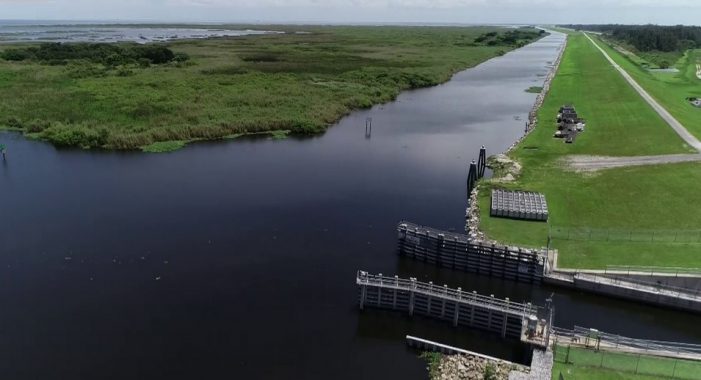By Jim Turner, The News Service of Florida
TALLAHASSEE — Construction of a reservoir south of Lake Okeechobee that state lawmakers envision as a way to help a region beset by toxic algae blooms was part of a wide-ranging water bill signed Tuesday by President Donald Trump.
The $6 billion America’s Water Infrastructure Act of 2018 includes authorization for the U.S. Army Corps of Engineers to begin work on a massive reservoir project that has been a priority of Florida Senate President Joe Negron, R-Stuart.
The next step is for Congress to allocate the $200 million a year needed for construction of the roughly $1.6 billion project, which supporters have envisioned as being half-funded by the federal government.
Negron on Tuesday called the reservoir “an indispensable component to ending the ruinous discharges from Lake Okeechobee.”
The idea of the reservoir is to move water south from Lake Okeechobee into the reservoir instead of releasing it into the St. Lucie and Caloosahatchee estuaries in Southeast and Southwest Florida.
The issue has been high-profile in Negron’s Treasure Coast district, where residents blame releases from the lake for algae-tainted water in the St. Lucie Estuary.
“Simply put, it is time to start construction of the reservoir that will reduce discharges from Lake Okeechobee by 63 percent and send more than 120 billion gallons of clean water south to the Everglades each year,” Negron said in a statement.
The federal money would trigger the design work, but concerns remain that construction could take up to a decade.
Everglades Foundation Chief Executive Officer Eric Eikenberg said Floridians, the state’s estuaries and coastlines and the Everglades cannot afford to wait.
“If the U.S. Army Corps of Engineers can repair the Mosul Dam in Iraq in one year, this critical Florida reservoir should not take another decade,” Eikenberg said in a prepared statement. “It now falls on Congress to appropriate the $200 million annually that is needed to construct the reservoir and move other critical Everglades restoration projects forward quickly. Be assured, the people of Florida will be watching.”
Negron is pushing for a fall groundbreaking and for a goal of three to five years to complete the reservoir.
“If the government is not up to the task, then we should competitively outsource the project to the private sector and build in financial incentives for early completion,” Negron said. “The nearly 21 million residents of Florida do not want to hear weak excuses about why earlier generations of Americans could apparently solve problems and accomplish goals without tedious procrastination.”
A Negron-backed bill, signed into law by Scott in May 2017, allows Florida to bond up to $800 million for the reservoir.
The bill capped annual state funding at $64 million and placed the reservoir on state-owned land rather than private farmland in the Everglades Agricultural Area.
To make the proposal more acceptable to farmers, residents and politicians south of the lake, Negron’s plan was redrawn to lower the costs and the bonding amounts. Also thrown in were a number of economic development projects in the Glades region, including an expansion at the Airglades Airport in Clewiston and an inland port in western Palm Beach County.
Scott said Tuesday the bill he signed into law “will help end the algal blooms on our coasts.” But Scott, who is running for U.S. Senate in the Nov. 6 election, added that Congress has failed to “properly” fund Everglades restoration.
“Everglades projects should have a 50-50 cost share between the state of Florida and the federal government, yet, thanks to inaction by Congress, the federal government is nearly $1 billion behind on its commitment,” Scott said.


The Swamp is holding up money that would clean up a longstanding dirty water problem.
Oh, the irony.